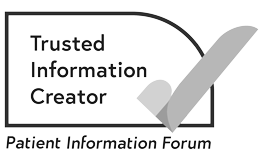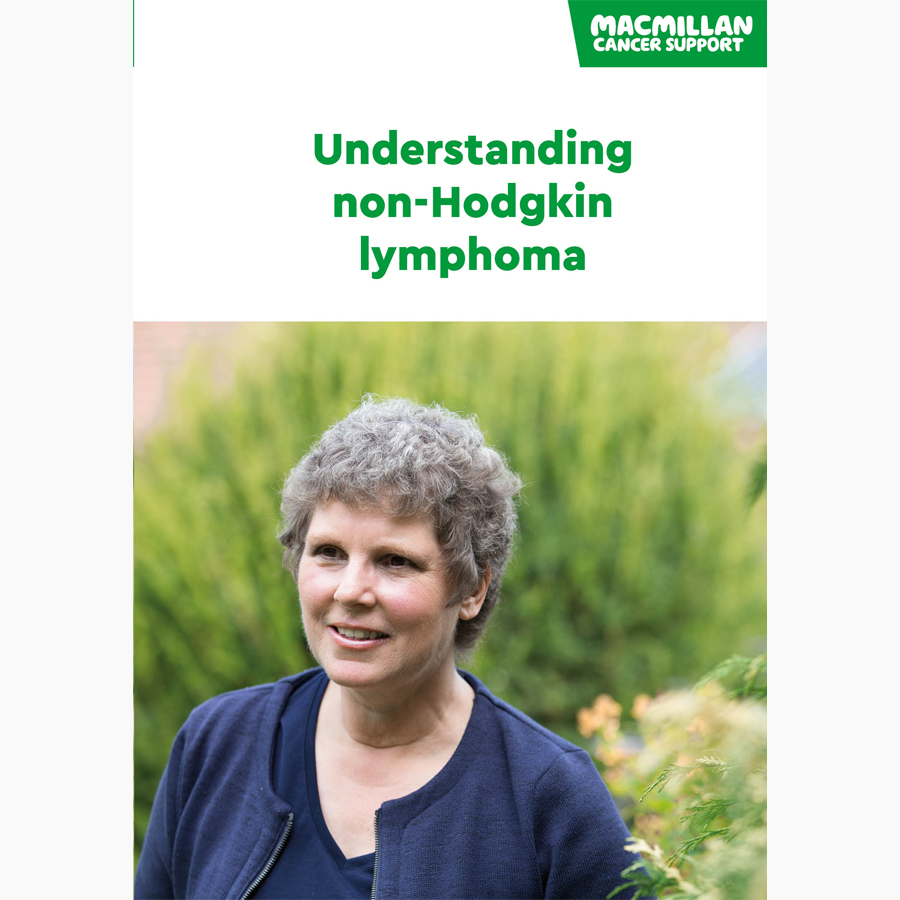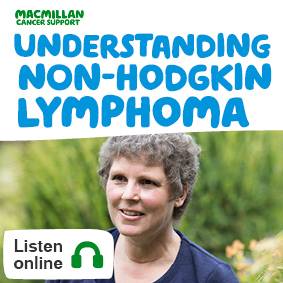Peripheral T-cell lymphoma, not otherwise specified (PTCL-NOS)
Choose a type
On this page
-
What are peripheral T-cell lymphomas, not otherwise specified?
-
Symptoms of peripheral T-cell lymphoma, not otherwise specified
-
Causes of peripheral T-cell lymphomas, not otherwise specified
-
Diagnosis of peripheral T-cell lymphoma, not otherwise specified
-
The stages and grades of peripheral T-cell lymphomas, not otherwise specified
-
Treatment for peripheral T-cell lymphoma, not otherwise specified
-
After treatment for peripheral T-cell lymphoma, not otherwise specified
-
Support for people with peripheral T-cell lymphomas, not otherwise specified
-
Access our lymphoma information in other formats
-
About our information
-
How we can help
What are peripheral T-cell lymphomas, not otherwise specified?
Peripheral T-cell lymphomas (PTCLs) are a group of non-Hodgkin lymphoma (NHL). PTCLs develop when T-cells become abnormal (cancerous). T-cells are white blood cells that normally help fight infection. They are sometimes called T-lymphocytes.
There are different types of PTCL. Each type has different characteristics and behaves in a different way.
Any PTCL that does not fit into one of the types is grouped with others similar to it and called a peripheral T-cell lymphoma, not otherwise specified (PTCL-NOS). The lymphomas in this group are not all the same. But they develop in a similar way and are treated in the same way.
PTCL-NOS are fast growing. The abnormal T-cells (lymphoma cells) usually build up in lymph nodes, but they can affect other parts of the body.
Related pages
For healthcare professionals
If you are a healthcare professional, use our guide to find the right information and support for your patients affected by lymphoma. This explains the support available from Macmillan and from other trusted organisations.
Symptoms of peripheral T-cell lymphoma, not otherwise specified
Painless swelling in neck, armpit or groin
This is the most common sign of PTCL-NOS. It is caused by lymphoma cells building up in the lymph nodes, which makes them bigger. Often, lymph nodes in more than one part of the body are affected.
Other symptoms
PTCL-NOS may also affect parts of the body outside the lymph nodes. This is called extranodal disease. Symptoms depend on the area affected.
General symptoms of PTCL-NOS may include loss of appetite and tiredness.
Related pages
Causes of peripheral T-cell lymphomas, not otherwise specified
The causes of peripheral T-cell lymphomas, not otherwise specified (PTCL-NOS), are mostly unknown. PTCL-NOS mainly affects adults in their 60s. They are more common in men than women.
Like other cancers, PTCL-NOS is not infectious. It cannot be passed on to other people.
We have more information about causes and risk factors of non-Hodgkin lymphoma.
Diagnosis of peripheral T-cell lymphoma, not otherwise specified
Booklets and resources
The stages and grades of peripheral T-cell lymphomas, not otherwise specified
Your test results will help your doctors find out how many areas of your body are affected by lymphoma and where these areas are. This is called staging.
Lymphomas are also grouped as either low-grade or high-grade. Low-grade lymphomas are usually slow growing. High-grade lymphomas usually grow more quickly. Peripheral T-cell lymphomas, not otherwise specified (PTCL-NOS) are high-grade lymphomas and normally develop quickly.
We have more information about the stages and grades of non-Hodgkin lymphoma.
Treatment for peripheral T-cell lymphoma, not otherwise specified
A team of specialists will meet to discuss the best possible treatment for you. They are called a multidisciplinary team (MDT).
Your doctor, cancer specialist or nurse will explain the different treatments and their side effects to you. They will also talk to you about things to consider when treatment decisions.
Treatment for peripheral T-cell lymphomas, not otherwise specified (PTCL-NOS) depends on the stage of the lymphoma and whether you have symptoms that are causing problems.
The most common treatments for PTCL-NOS are:
-
Chemotherapy
PTCL-NOS is usually treated with a combination of chemotherapy and other drugs. The most commonly used combination is a treatment called CHOP. Sometimes combinations of other drugs are used.
-
Steroids
Steroids are drugs that are often given with chemotherapy to treat lymphomas. They help make chemotherapy more effective.
-
Stem cell transplants
If chemotherapy has treated the PTCL-NOS effectively, some people will then have stem cell treatment. This may also be used to treat PTCL-NOS that has come back. It is an intensive treatment, so it is not suitable for everyone. You may have a transplant using your own stem cells (autologous stem cell transplant) or cells from a donor (allogeneic stem cell transplant).
-
Radiotherapy
Radiotherapy uses high-energy rays to destroy cancer cells, while doing as little harm as possible to nearby healthy normal cells cells. Radiotherapy only treats the area of the body that the rays are aimed at.
Some people have radiotherapy after chemotherapy to treat an area of lymphoma. This can treat any remaining lymphoma cells in the area. It can also reduce the risk of lymphoma coming back in the area. Radiotherapy is also sometimes given to treat symptoms such as pain. -
Targeted therapy
Targeted therapies interfere with the way cancer cells grow. These drugs only ‘target’ the cancer cells, so they have less effect on healthy cells.
You may have some treatments as part of a clinical trial.
Treatment may make all signs of the PTCL-NOS disappear. This is called remission. But PTCL-NOS may come back. This is called recurrence or relapse. If this happens, further treatment can usually be given.
We have more information about treating lymphoma that has come back.
After treatment for peripheral T-cell lymphoma, not otherwise specified
People often have many different feelings when they finish lymphoma treatment. You may feel relieved that treatment has finished, but worried about what will happen in the future.
You will have appointments with your lymphoma doctor or nurse less often than before. But at the same time, you may have new challenges to cope with and things to think about.
We have information below about some of the things people ask about after lymphoma treatment. But you may have other questions or need information about something else. If there is something you want to talk about at any point after treatment, you can:
- call the Macmillan Support Line free on 0808 808 00 00
- chat to our specialists online
- visit our Online Community to talk to people who have been affected by lymphoma, share your experience, and ask an expert your questions.
Related pages
Follow-up after treatment for lymphoma
You will have regular check-ups during and after your treatment. Your cancer doctor or specialist nurse will explain what to expect.
Follow-up appointments are a good time for you to talk to your cancer doctor or specialist nurse about any concerns you have. Tell them as soon as possible if you have any problems or notice new symptoms between appointments. We have more information about follow-up care after lymphoma treatment.
Sometimes side effects may continue or develop months or years after treatment. These are called late effects. We have more information about long-term and late effects of treatment for lymphoma.
Well-being and recovery
It can take time to recover after lymphoma treatment. Some days you may feel better than others.
A healthy lifestyle can help speed up your recovery. Even small lifestyle changes may improve your well-being and long-term health.
Even if you already have a healthy lifestyle, you may choose to make some positive changes after treatment. We have more information on leading a healthy lifestyle after treatment.
Support for people with peripheral T-cell lymphomas, not otherwise specified
Talk to someone about peripheral T-cell lymphomas, not otherwise specified
Everyone has their own way of dealing with illness and the different emotions they experience. You may find it helpful to talk things over with family and friends or your doctor or nurse.
Macmillan is also here to support you. If you would like to talk, you can:
- Call the Macmillan Support Line on 0808 808 00 00.
- Chat to our specialists online.
- Visit our non-Hodgkin lymphoma forum to talk with people who have been affected by non-Hodgkin lymphoma (NHL), share your experience, and ask an expert your questions.
More information and advice
We know cancer can affect you physically, emotionally and financially. We have information and advice about different ways cancer might impact you, such as help with:
Other organisations who offer information and support
- Blood Cancer UK offers support and information to people affected by blood cancers, including lymphoma.
- Lymphoma Action provides high quality information and support for people affected by lymphoma. It provides helpline services and a range of peer support including online support meetings, educational events and webinars. Its website includes TrialsLink, a database of lymphoma clinical trials.
Supporting someone with lymphoma
When someone you know is diagnosed with lymphoma, it can be difficult to know how to support them. You may want information to help you understand what they are going through. Or you may be worried about what to say.
We have information to help with the practical, emotional and financial impacts of supporting someone. You can also talk to us by:
- calling the Macmillan Support Line
- using chat online
- visiting our family and friends forum to talk with people who are supporting someone with cancer, share your experience, and ask an expert your questions.
Booklets and resources
Access our lymphoma information in other formats
We are working to make our website as accessible as possible. We want everyone to be able to use it to find the information they need. We have tips about using settings on your computer or device to help you use our website in our accessibility statement.
We also provide information in a range of languages and formats. If you cannot find the information you are looking for in the format or language you need, email us at cancerinformationteam@macmillan.org.uk
Order our non-Hodgkin lymphoma booklet
Download our lymphoma booklet and ebooks
Our Understanding non-Hodgkin lymphoma booklet is available as a pdf to download or view online and in ePub or Mobi formats to download.
Booklets and resources
Listen to our lymphoma audiobook
You can listen to our Understanding non-Hodgkin lymphoma audiobook. You can also search our full range of audiobooks.
Booklets and resources
Find non-Hodgkin lymphoma information in your language
We have a range of translated cancer information. This includes information about different cancer types, being diagnosed, cancer treatment, and side effects. We have some lymphoma information in the following languages. You can also search our most up to date list of web pages we have translated on request.
- Bulgarian - Mantle cell lymphoma / Мантелноклетъчен лимфом [PDF]
- German - Follicular lymphoma / Follikuläres Lymphom (FL) [PDF]
- Polish - Diffuse large B-cell lymphoma (DLBCL) / Chłoniak rozlany z dużych komórek B [PDF]
- Polish - Lymphoma / Chłoniak [PDF]
- Slovak - Anaplastic large cell lymphoma (ALCL) / Anaplastický veľkobunkový lymfóm [PDF]
- Slovak - Follicular lymphoma / Folikulový lymfóm [PDF]
- Tamil - Follicular lymphoma [PDF]
If you would like any of our lymphoma information translated into your language, please email cancerinformationteam@macmillan.org.uk
Watch British sign language videos
You can watch our BSL videos about cancer on YouTube.
Find our easy read booklets
Our easy read booklets use simple words and pictures to tell you about cancer. They can be useful if you want information that is easier to understand.
Looking for large print, Braille or another format?
If you would like our information in a different format such as large print or Braille, email us at cancerinformationteam@macmillan.org.uk or call us free on 0808 808 00 00.
About our information
-
References
Below is a sample of the sources used in our peripheral T-cell lymphoma, not otherwise specified (PTCL-NOS) information below. If you would like more information about the sources we use, please contact us at cancerinformationteam@macmillan.org.uk
National Institute of Health and Care Excellence (NICE). Blood and bone marrow cancers. NICE Pathways. Last accessed 3 December 2020.
d’Amore. F, Gaulard. P et al. Peripheral T-cell lymphomas: ESMO Clinical Practice Guidelines for diagnosis, treatment and follow-up. Volume 26, supplement 5, V108-V115. Published 01st September 2015. Available here: Peripheral T-cell lymphomas: ESMO Clinical Practice Guidelines for diagnosis, treatment and follow-up - Annals of Oncology
Schmitz M and de Leval L. How I manage peripheral T-cell lymphoma, not otherwise specified and angioimmunoblastic T-cell lymphoma: current practice and a glimpse into the future British Journal of Haematology. 2017. 176, 851–866.
-
Reviewers
This information has been written, revised and edited by Macmillan Cancer Support’s Cancer Information Development team. It has been reviewed by expert medical and health professionals and people living with cancer. It has been approved by Senior Medical Editor, Dr Anne Parker, Consultant Haematologist.
Our cancer information has been awarded the PIF TICK. Created by the Patient Information Forum, this quality mark shows we meet PIF’s 10 criteria for trustworthy health information.
Date reviewed
This content is currently being reviewed. New information will be coming soon.

Our cancer information meets the PIF TICK quality mark.
This means it is easy to use, up-to-date and based on the latest evidence. Learn more about how we produce our information.







